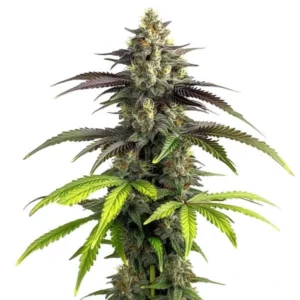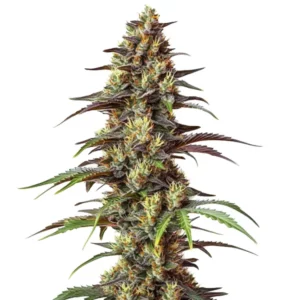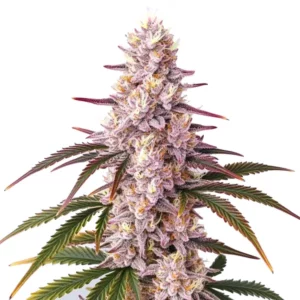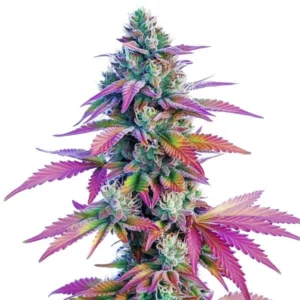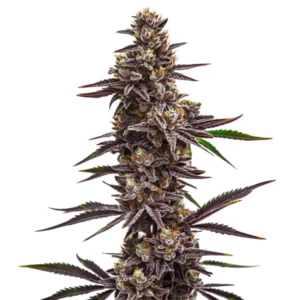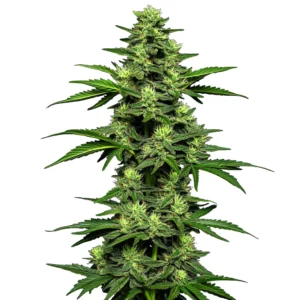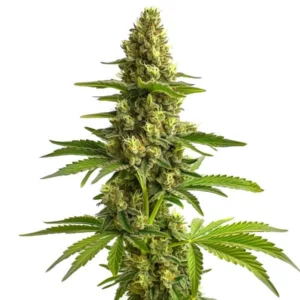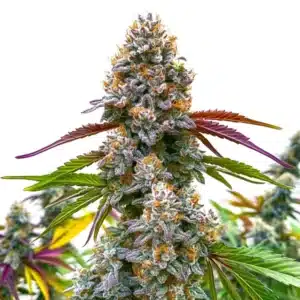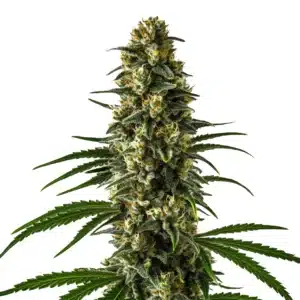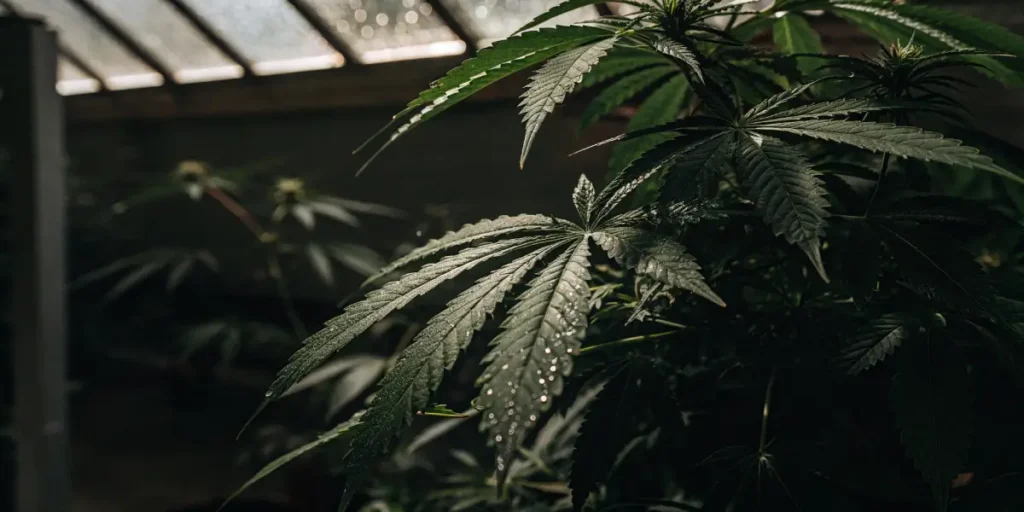
Tips to Prevent Water Stress in Cannabis Cultivation
Water stress can be a sneaky issue in cannabis cultivation. It doesn’t matter if you’re a newbie or a seasoned grower; knowing how to keep your plants happy is crucial. When cannabis plants face water stress, their growth can slow, and yields can suffer. Let’s dive into some practical tips to prevent water stress in cannabis cultivation.
One essential trick to preventing water stress in cannabis growing is mastering your watering schedule. Overwatering is as common as underwatering. Both can lead to problems. Keep an eye on your soil moisture levels. Check the top inch of soil; if it’s dry, it might be time to water. But if it’s still moist, hold off. This simple habit can make a world of difference.
Recommended Strains
Bruce Banner 2.0
-
THC: 25% - 30%
-
Type of seed: Feminized
-
Phenotype: 65% Sativa / 35% Indica
-
Flavor: Citrus, Diesel
-
Day to flower: 8 - 10 weeks
Bruce Banner Regular
-
THC: 25% - 32%
-
Type of seed: Regular
-
Phenotype: 60% Sativa / 40% Indica
-
Flavor: Citrus, Diesel, Sweet
-
Day to flower: 8 - 10 weeks
Consider the cannabis strain you’re growing. Strains like Blue Dream and Girl Scout Cookies from Blimburn Seeds have different water needs. Some strains prefer a bit more moisture, while others thrive with less. Knowing your strain’s preference can help tailor your watering schedule, reducing water stress in marijuana plants effectively.
Best Irrigation Practices for Cannabis Plants
Drip irrigation systems are a great way to provide consistent moisture. They deliver water directly to the roots, reducing evaporation and ensuring even distribution. This method is one of the best irrigation practices for cannabis plants. Plus, it saves water by targeting only the areas that need it.
Another practice is to water early in the morning. This allows the plants to absorb water before the heat of the day causes evaporation. Consistent daily watering times help your plants establish a routine, which is key in preventing water stress in cannabis growing. Try to avoid watering late in the evening, as this can lead to mold and mildew.
Incorporating rainwater collection into your irrigation practices can provide a sustainable source of water. Rainwater is free from chemicals like chlorine, making it an excellent choice for your cannabis plants. Set up a simple collection system to take advantage of this natural resource.
Another tip to prevent water stress in cannabis cultivation is to mulch around your plants. Mulching can help retain soil moisture and improve water efficiency. Mulch also regulates soil temperature, which can further aid in reducing water stress in marijuana plants.
Soil vs. Hydroponics: Tailoring Your Watering Approach
When growing in soil, the type of soil affects water retention. Sandy soils drain quickly, whereas clay-heavy soils retain water longer. Adjust your watering schedule based on the soil’s characteristics. If you’re unsure, consider a soil moisture meter for precision.
Hydroponic systems require a different approach. Watering is more about nutrient delivery in this setup. Keep an eye on the nutrient solution’s level and pH. Regularly check the system to ensure that water is reaching all plants evenly, preventing any water stress.
In hydroponics, maintaining the right balance of nutrients is crucial. Over-fertilization can lead to nutrient lockout, which mimics water stress symptoms. Adjust nutrient concentrations based on plant growth stages and environmental conditions.
For soil-grown cannabis, choosing the right soil mix can significantly impact water management. A mix that includes perlite or vermiculite can improve drainage and aeration, helping to prevent water stress and promoting healthy plant growth.
Promos & Deals
How to Optimize Humidity for Cannabis Growth
Humidity plays a crucial role in water stress. Too much or too little can affect plant health. For young plants, higher humidity levels work best. Around 60-70% is ideal. As plants mature, lower the humidity to 40-50% to prevent mold.
Use a hygrometer to monitor humidity levels. This handy tool can help you make real-time adjustments. If your grow room is too humid, consider using a dehumidifier. On the flip side, a humidifier can add moisture when levels are too low.
To further optimize humidity, consider integrating humidity control systems that automatically adjust based on the environment. These systems can enhance the effectiveness of your grow room setup and ensure consistent humidity levels.
Another approach to manage humidity is through plant spacing. Providing enough space between plants ensures good air circulation, which helps regulate humidity and reduces the risk of fungal diseases that thrive in moist conditions.
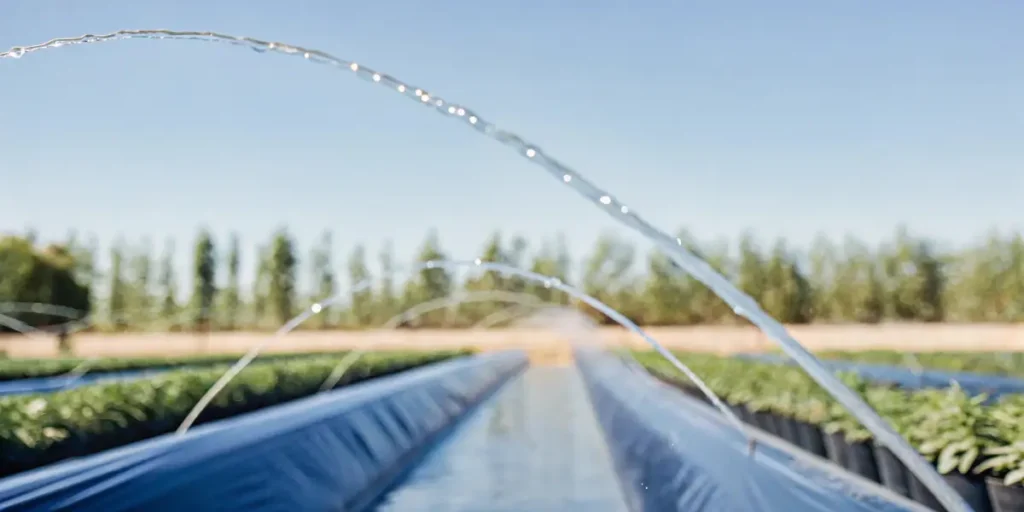
Ventilation: Key to Humidity Control
Good airflow is vital. Install fans to keep air circulating. This helps maintain consistent humidity levels. It also reduces the risk of mold and pests, which thrive in stagnant conditions.
When setting up your grow room, think about the layout. Place fans strategically to ensure even airflow. Adjust fan speed and placement based on your plants’ growth stage and the room’s conditions.
Incorporating exhaust systems can further enhance ventilation. These systems remove stale air and bring in fresh air, helping to maintain ideal humidity levels and preventing water stress in cannabis growing.
Passive ventilation, such as vents and louvered openings, can also be effective. They allow for natural airflow, complementing mechanical ventilation systems and contributing to effective water management in cannabis cultivation.
Effective Water Management in Cannabis Cultivation
Water management is more than just watering on time. It’s about assessing the overall health of your plants. Leaf color, for instance, can indicate water stress. Yellowing leaves might mean overwatering, while droopy leaves can signify a lack of water.
Another aspect is the quality of water used. Chlorine and high pH levels can harm your plants. Use filtered water or let tap water sit for 24 hours to let chlorine dissipate. Test your water’s pH and adjust it to a range of 6.0 to 7.0 for soil and 5.5 to 6.5 for hydroponics.
Regularly testing the electrical conductivity (EC) of your water can provide insights into nutrient levels. Maintaining the correct EC levels helps ensure that your plants receive the right amount of nutrients without experiencing water stress.
Integrating technology, such as smart sensors, can enhance water management. These devices provide real-time data on soil moisture and environmental conditions, allowing you to make informed decisions and improve your watering practices.
Smart Watering Tools and Techniques
Consider using smart watering systems. They allow you to automate the process, reducing human error. Some systems even monitor soil moisture and adjust water delivery based on real-time data.
Mulching is another effective technique. It helps retain soil moisture and reduces evaporation. Organic mulches like straw or wood chips work well. They also break down over time, adding nutrients to the soil.
Drip irrigation controllers with timers can provide precision watering, delivering water exactly when it’s needed. This technology supports best irrigation practices for cannabis plants, optimizing water use and reducing waste.
Capillary mats are another smart tool to consider. These mats draw water up from a reservoir as needed, ensuring consistent moisture levels in your growing medium without overwatering.
Strains That Handle Water Stress Well
Some cannabis strains are naturally more resilient to water stress. For instance, the Critical Daddy Purple from Blimburn Seeds is known for its robustness. It can handle varying water levels better than some other strains.
Another resilient strain is the Bruce Banner 3. It’s versatile and can adapt to different growing conditions. This makes it a great choice for growers concerned about water stress.
Researching strain genetics can provide valuable insights into their water needs. Strains with roots in arid regions may naturally exhibit drought resistance, making them ideal for environments with limited water availability.
Hybrid strains often combine traits from multiple cannabis varieties, potentially offering a balanced approach to water management. These strains can provide flexibility in cultivation, adapting to various environmental conditions.
Choosing the Right Strain for Your Environment
When selecting a strain, consider your local climate. If you live in a dry area, opt for strains that are drought-resistant. Conversely, in humid regions, choose strains that can handle excess moisture.
Research each strain’s specific needs. Blimburn Seeds provides detailed information on their strains, helping you make an informed decision. This knowledge can help tailor your cultivation approach.
Taking into account the growing environment, such as indoor versus outdoor cultivation, can aid in selecting the best strain. Indoor growers might prioritize strains that perform well in controlled conditions, while outdoor growers may seek robust varieties.
Consulting with local growers or forums can also provide practical insights. Experienced cultivators can share their experiences, helping you choose strains that have proven successful in similar environments.
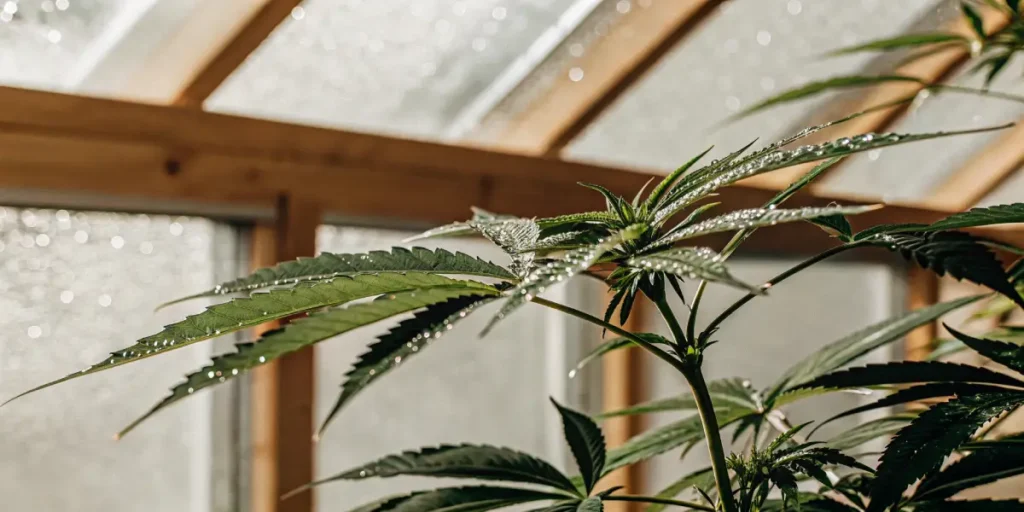
FAQs
What causes water stress in cannabis plants?
Water stress in cannabis plants happens when they receive too much or too little water. Overwatering can suffocate roots, while underwatering deprives them of essential nutrients. Both scenarios can lead to stunted growth and reduced yields.
Environmental factors like high temperatures and low humidity can exacerbate water stress. These conditions increase water loss through evaporation and transpiration, making it crucial to manage watering practices carefully.
Other contributing factors include poor soil structure and inadequate drainage. These issues can lead to waterlogging or insufficient water availability, both of which can stress plants.
Monitoring environmental conditions and adjusting your watering approach accordingly is key to preventing water stress. Being proactive can help ensure that your cannabis plants thrive.
How often should I water my cannabis plants?
The frequency of watering depends on various factors such as plant size, growing medium, and environmental conditions. Generally, water when the top inch of soil feels dry. Hydroponic systems may require more frequent monitoring.
For soil-grown plants, start with a regular schedule and adjust based on plant response. Over time, you’ll develop a sense of your plants’ needs. Always remember, both overwatering and underwatering can lead to water stress.
As a general rule, it’s better to underwater than overwater, as plants can often recover more easily from dryness than from root rot caused by excess water.
Seasonal changes can also affect watering frequency. In cooler months, plants may require less water, while in warmer months, their needs may increase.
Can humidity levels affect water stress in cannabis plants?
Yes, humidity levels play a significant role in water stress. High humidity can lead to excess moisture, increasing the risk of mold and mildew. Low humidity, on the other hand, can cause plants to lose water quickly, leading to dehydration.
Maintaining optimal humidity levels is crucial. Use devices like hygrometers to monitor and adjust humidity as needed. This ensures your cannabis plants remain healthy and stress-free.
Balancing humidity with temperature is also important. High temperatures combined with low humidity can exacerbate water stress, while low temperatures with high humidity can encourage fungal growth.
Implementing a holistic approach that considers both humidity and temperature can help create a stable environment, supporting overall plant health.
What are the signs of water stress in marijuana plants?
Water stress signs include wilting, yellowing leaves, and stunted growth. Overwatered plants may have droopy, swollen leaves, while underwatered plants often look dry and brittle. Monitoring these signs can help you adjust your watering practices.
If you notice these symptoms, evaluate your watering routine. Check soil moisture levels, and adjust as necessary. This proactive approach can prevent long-term damage to your plants.
Other signs of water stress include leaf curling and browning edges. These symptoms can indicate an imbalance in water availability or nutrient uptake.
Regularly inspecting your plants and responding promptly to these signs can help mitigate stress and promote recovery.
Are there strains of cannabis that are more resistant to water stress?
Yes, some cannabis strains are more resistant to water stress. For instance, Critical Daddy Purple and Bruce Banner 3 from Blimburn Seeds are known for their resilience. These strains can tolerate fluctuations in water levels better than others.
When choosing a strain, consider your growing environment and water availability. Opting for a resilient strain can make your cultivation process smoother and more rewarding.
Resilient strains often have robust root systems, allowing them to access water more efficiently and withstand periods of drought or overwatering.
Exploring the genetic background of strains can provide additional insights into their adaptability and resistance to water stress, aiding in the selection process.

